A FLY ANGLER TELLS TALL TALES
The following appears in the May issue of California Sportsman:
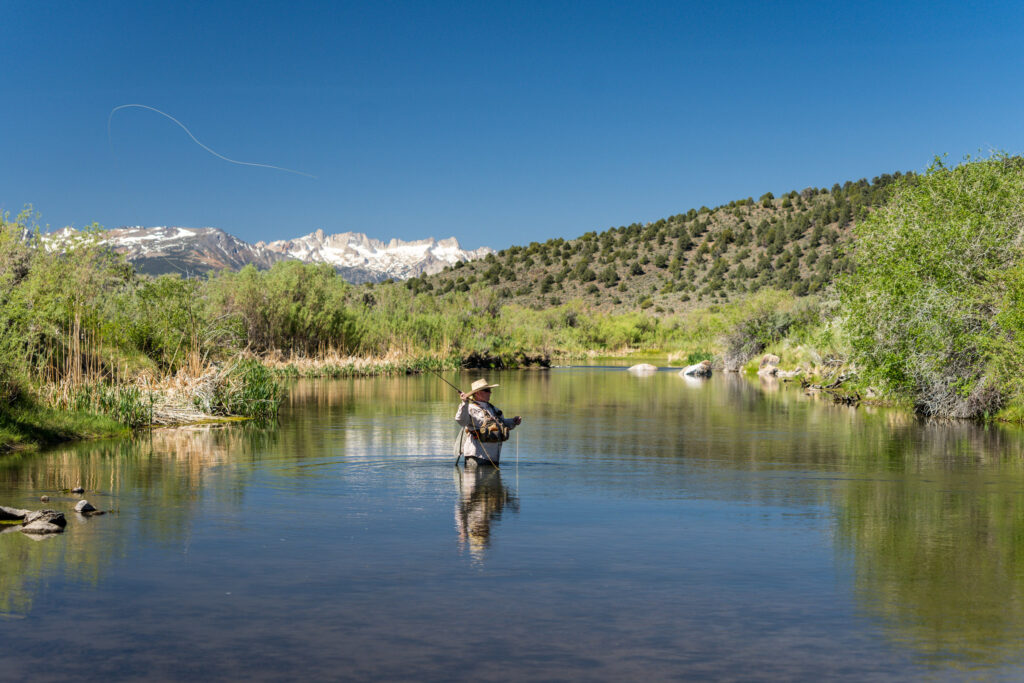
Longtime author and fly angler Steve Raymond, who’s based in the Pacific Northwest, has never had a chance to fish the Eastern Sierra’s East Walker River and other nearby waters. But the 83-year-old has plenty of memories of catching fish on West Coast rivers. His latest book, Six Fish Limit, is a collection of fictional fishing tales. (CHRISTIAN PONDELLA/MONO COUNTY TOURISM)
By Chris Cocoles
In his latest book, Six Fish Limit, Steve Raymond pivots away from his nonfiction portfolio for a series of short stories – plus one novella – that bring to life the joy, passion and beauty of fishing, with a juicy scandal about plagiarism thrown in the mix.
“Fly-fishing literature is a genre rife with tired cliches and posturing, but Steve has a knack for reinventing the wheel in fresh and interesting ways,” says fellow author John Gierach, whose book Dumb Luck and the Kindness of Strangers was featured in CS in April 2020. “It’s always a pleasure to read Steve Raymond.”
Now 83, Raymond, a Pacific Northwest native and a former newspaper editor in Seattle, has written more than a dozen fishing books, and Six Fish Limit features tales such as “Welcome to the Stub Mountain Fly Shop,” about a mom and pop fishing store owner desperate to keep her father’s business afloat after inheriting it. And in “Diary of an Unknown Angler” Raymond creates fishing detective Andrew Royster, a college professor and avid fly angler who reads an old diary entry that “appears to hold the solution to one of fly fishing’s greatest mysteries.”
This book (see sidebar for an excerpt) offers another chance for Raymond to profess a lifelong affection.
“Life is short; go fishing whenever you can!” Raymond said in an email interview. He talked to us about some memorable California adventures, his admiration for steelhead fishing and how critical it is to preserve anadromous fish runs up and down the West Coast.
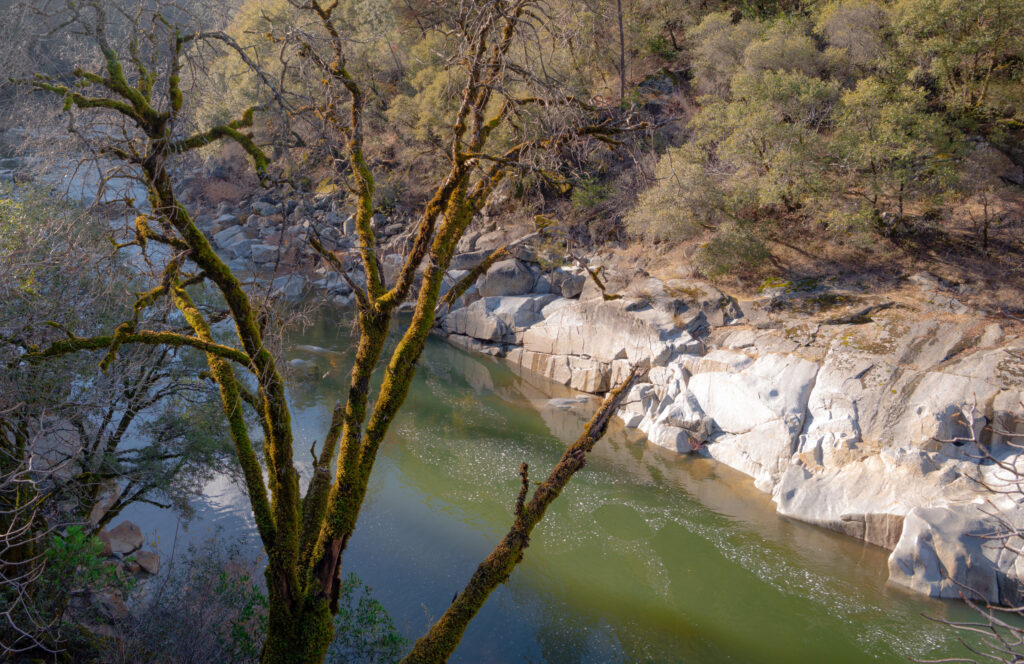
Raymond’s most memorable fishing experience in California was casting flies for American shad in the Yuba River. “ I was nearly alone on the river and fished for hours without a touch, then suddenly hooked a single, lonely shad, a big female that put up a real struggle,” he says. (JESSE PLUIM/BUREAU OF LAND MANAGEMENT)
Chris Cocoles What was the inspiration for the short stories/novella you tell in Six Fish Limit?
Steve Raymond The “inspiration” – if that’s what it was – is that I really needed to do something to keep from going stir-crazy while my wife and I hunkered down during the early days of the Covid pandemic, and writing another book seemed the perfect remedy. It not only kept me entertained, but I hoped it also would entertain others in the days ahead. It also gave me an opportunity to write some stories I’d been carrying in my head for a long time.
CC There are so many great fish tales and anecdotes in this book. As a longtime newspaper sports reporter and now a magazine editor, I love the idea of storytelling through writing profiles and feature stories. Is that something you’ve always loved as you’ve evolved as an author and also a newspaperman yourself during your career at The Seattle Times?
SR As a reporter I was pretty much a hard-news guy, and in those days The Seattle Times had six daily deadlines, which kept everybody busy. But tackling hard news didn’t allow much flexibility in writing, so I started freelance writing about fly fishing (my passion) and that soon led to writing books. That gave me the freedom to describe some of the people and places I’ve encountered in my fishing experiences, usually with the goal of trying to alert readers to the wonders of the natural world that make up so much of the fishing experience; I call it the “awe” of fishing.
CC I think my favorite story in the book was “The Man In the Black Waders” about Clint Steele, “the most famous fly fisher in the world,” who was accused by a retired teacher of plagiarism. Is there a backstory to your idea for writing that novella?
SR Actually, there is. As editor of two fishing magazines I learned the hard way that plagiarism can be a problem in that business. It usually happens when an unethical person copies part or all of someone else’s work and submits it to a magazine under his or her own name. Since it’s impossible for editors to read everything about fishing, some of those stories inevitably get published, and then a reader, or perhaps the original author, will discover the story was plagiarized and complains to the magazine. This almost always leads to a difficult, messy situation that leaves everyone unhappy, and the person who perpetrated the plagiarism ends up blacklisted by the magazine that published the purloined material. Fortunately, there isn’t too much of this, but The Man in Black Waders gave me a chance to let readers know that it does happen, and usually has very bad consequences for the guilty party.

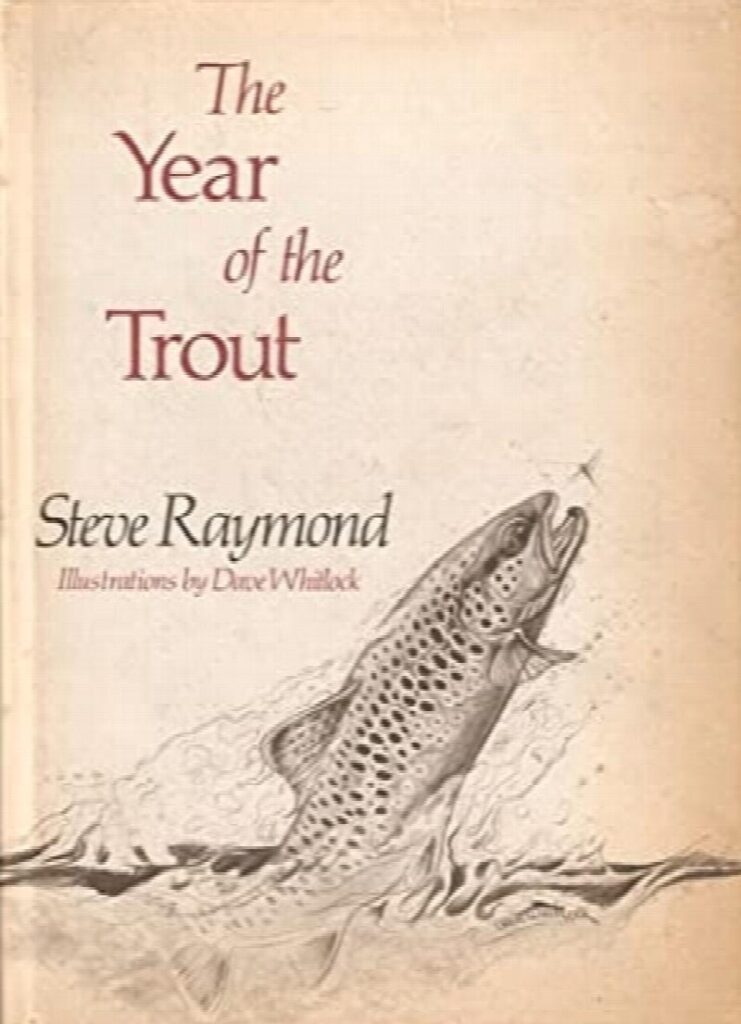
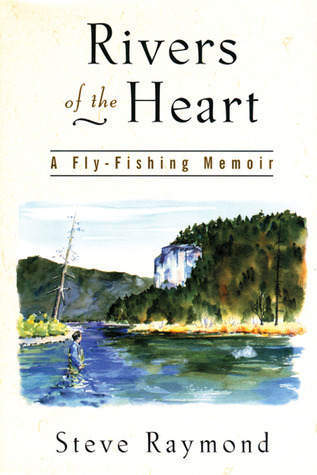
Of the more than dozen books he’s written, Raymond says his three favorites are The Year of the Angler, The Year of the Trout and Rivers of the Heart. (STEVE RAYMOND BOOKS)
CC Do you have a favorite of all the fishing books you’ve penned?
SR Actually, I have three favorites: The Year of the Angler, The Year of the Trout and Rivers of the Heart.
CC Where did you first find your passion for fly fishing?
SR My earliest memory of my father was when I was 5 years old and he came home from serving in World War II. He was a fly fisherman and one of the first things he wanted to do when he got home was go fishing, and he took me along. After that I couldn’t think of anything I’d rather do than go fishing with a fly.
CC Do you have fishing memories in California?
SR My fishing time in California has been pretty limited, but my wife’s parents used to live in Marin County and sometimes when we visited ’d get a chance to go fishing. My father-in-law introduced me to a friend who was a fly fisher and we went fishing together for shad on the Yuba River. I’d fished for shad before in the Columbia River [in the Pacific Northwest], but that’s big water that required fishing from a boat and casting blind because it was impossible to see the fish (although sometimes you’d hook a steelhead instead of a shad, which wasn’t a bad thing). The Yuba, of course, is much smaller and more intimate and friendly, and when the light was good I could see schools of shad moving upstream, more shad than I’d ever seen before. Unfortunately, my new friend lost his footing and fell in the river early in the day and had to hike back to his car for dry clothing, so I ended up fishing by myself for quite a while, although there were plenty of other anglers on the stream. Long story short, I had the best day of shad fishing I ever had.
On another occasion, I went to the Yuba by myself at a time when the word was out that the season’s best fishing was already past. I was nearly alone on the river and fished for hours without a touch, then suddenly hooked a single, lonely shad, a big female that put up a real struggle. I was just about to beach it when a pair of other fishermen appeared and expressed amazement at the fish’s size. One asked if I was planning to keep it, and I said no. Then they told me they had been fishing all day without any luck and they really wanted a big female for its roe and would I, please, just possibly consider giving it to them? I had mixed feelings about that, but I could see they were fly fishermen and they had asked politely, so I finally decided to let them have it. One of them brought out a scale and weighed the fish, which pulled the scale down just past the 6-pound mark. It was the largest shad I ever caught. I hope those guys enjoyed the roe.
CC The general trout season is getting started in California in the Eastern Sierra in late April. How special is it to fly fish for wild and native trout in some of the West’s great rivers and smaller streams/creeks?
SR Regretfully, I’ve never fished in the Sierra, but I think it’s a privilege to fish anywhere in our coastal or mountain streams in the early season, just when the first fly hatches are getting underway.
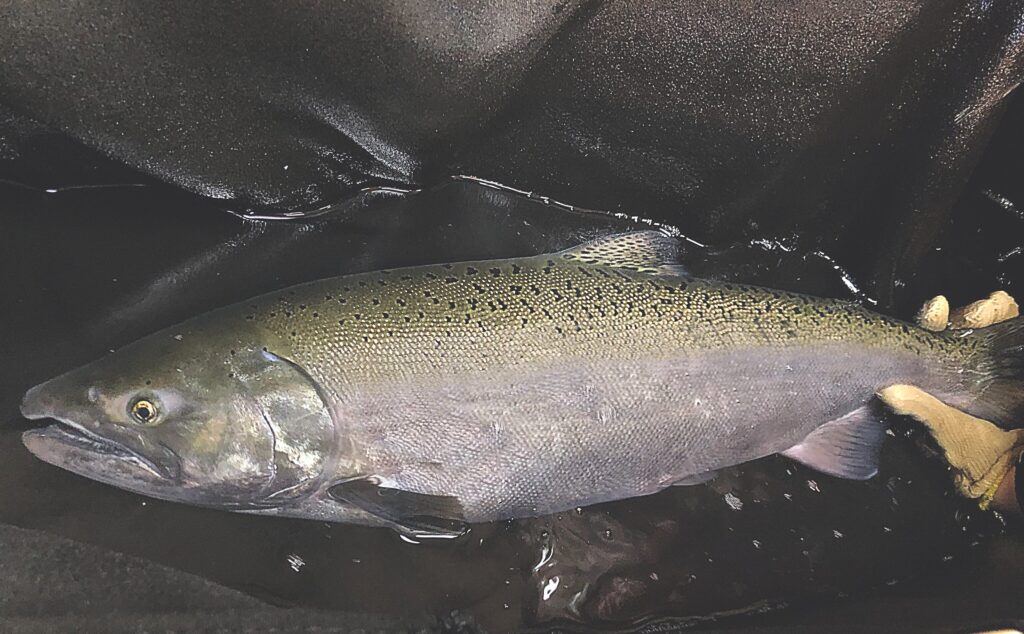
Raymond says protecting runs of California Chinook salmon and other anadromous fish along the West Coast should be a priority. “Nearly all the places I once enjoyed fishing have since been ruined, either from encroaching ‘development’ or sheer neglect,” he says. (USFWS)
CC I’m from Northern California and live in Seattle now. And it’s just so depressing to see the struggles that salmon are having up and down the West Coast, including a lot of the king salmon closures in California and Alaska. How frustrating is that from an angler’s perspective?
SR Frustrating isn’t the word for it; it’s maddening. I’ve lived in Washington state most of my life and witnessed not only the decline or extinction of the salmon and steelhead runs, but also most of the trout fishing in the state. Nearly all the places I once enjoyed fishing have since been ruined, either from encroaching “development” or sheer neglect. I’ve seen the same thing in Oregon and British Columbia, where I used to fish much of the time. The care of fisheries and the waters that sustain them has always been a very low priority for state and provincial governments, with little money or attention devoted to them, and now we see the results. Those resources once were important reasons why people wanted to live in the Northwest; now they don’t exist any longer. My children and grandchildren will never have the chance to enjoy the places I loved while growing up, and neither will anyone else. That’s a tragedy of the first magnitude. It saddens me to think about it.

Majestic steelhead have been a lifelong obsession for Raymond. “I think, at a primal level, they exhibit some of the things we humans have always considered attributes of our own species – courage, determination and the will to survive against long odds,” he says. (STEVE MARTARANO/USFWS)
CC You also have written a lot about steelhead in your book Steelhead Country. What have those fly fishing experiences meant to you over the years?
SR Steelhead always have been an inspiration to me. I think, at a primal level, they exhibit some of the things we humans have always considered attributes of our own species – courage, determination and the will to survive against long odds. So it’s a small wonder that we should admire them so much, or seek, even subconsciously, to emulate their virtues, especially during a time in our history when wild steelhead are threatened over so much of their native range.
CC After all these years, has there been a bucket list fishing destination that you haven’t been able to cross off your list that you still wish you could? Or still want to?
SR Yes. I’ve always wanted to fish for Atlantic salmon in Iceland, but never had the chance to do that. And since steelhead fishing opened in Kamchatka [Russia], I’ve always wanted to fish that amazing place. Another thing I’d like to do is catch a grayling; I fished one river where a few were present, but never caught one. Now I’m too old to cross any of those off my list.
CC Of all the ones you’ve fished with, do you have an all-time favorite fly? SR I get that question a lot, and I’ve never been able to single out one fly. So I’ll answer it the same way I always do: My favorite fly is whatever one I happen to be using at the time. CS
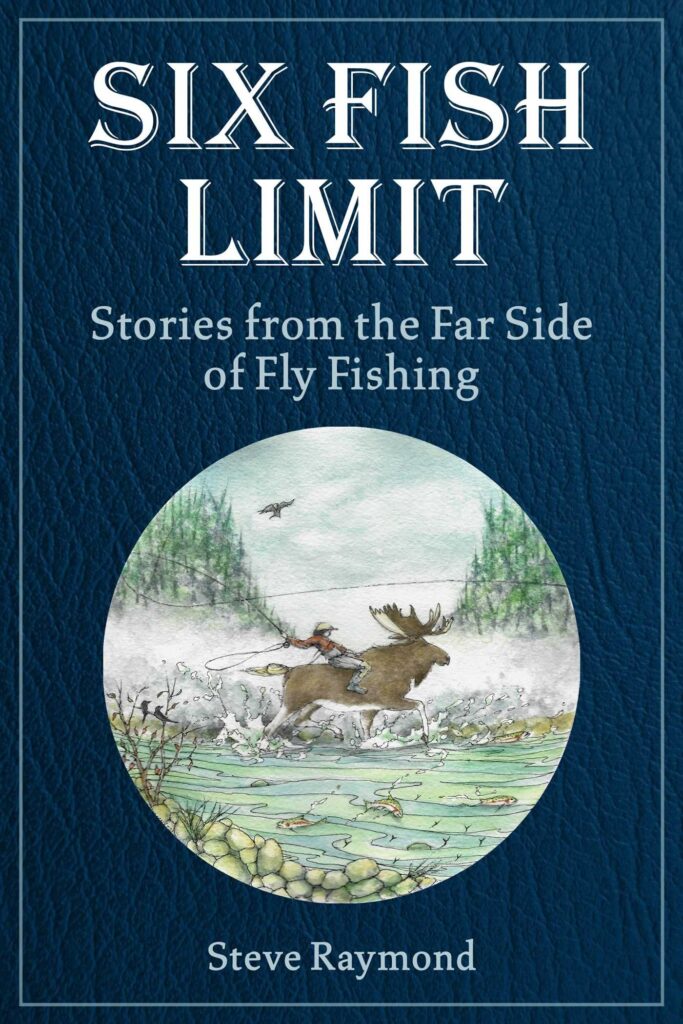
Editor’s note: The following is excerpted from Steve Raymond’s latest book, Six Fish Limit, published by Skyhorse Publishing and avail- able for purchase at amazon.com/Six-Fish- Limit-Stories-Fishing/dp/1510770011.
I tried to resume my fly-fishing education by looking at other websites. What I found wasn’t very helpful;
there were so many sites and they were so variable in content that I soon gave up. The only thing I learned was that fly fishing was a sport heavily laden with celebrities, of whom Clint Steele was the foremost. But I had known that already.
I decided my time might be spent more profitably at the public library, so that’s where I went next. And that’s where I learned that fly fishing has even more books – many more – than it has celebrities. There were also lots of videos, including “Fly Casting with Clint.” I checked it out along with several promising books, including Steele’s Eight Great Western Steelhead Rivers and another titled Permit Me, which I subsequently learned was about fishing for a saltwater species called permit, which I’d never heard of. The library didn’t have a copy of Mickey Cutter’s book, so I returned to my office and ordered a copy from the Internet. Everything else I took back to my dingy, cramped, hugely overpriced apartment to study.
And that’s pretty much all I did for the next few days. Somewhat to my surprise, I learned that fly fishing is a complex sport combining elements of philosophy, nature study, literature, biology, limnology, and probably a few other ologies I hadn’t encountered. It even had touches of religion.
Oddly enough, it was Steele’s casting video that was most helpful. I didn’t like his high, nasal voice, but his presentation was clear and well-organized. From it I learned that the fly rod acts as a lever to propel the weight of a thick, tapered fly line, which has on its end a translucent leader with a virtually weightless fly attached, and in this it is different from all other forms of fishing where casts are made with the weight of the lure pulling an almost weightless line behind it. That made everything clear and helped me understand why there were so many different lengths of fly rod and weights of fly line.
The video was much clearer and easier to absorb than Steele’s prose. I figured someone else had written the video script and Steele had read it off a teleprompter.
When Cutter’s book arrived I opened it and started reading the foreword:
Let me tell you about a river. Its name is the Biscuit – an odd name for a river, but that’s not the river’s fault. It was the name given by the country’s original inhabitants in a language no longer spoken or understood. The earliest European settlers translated it phonetically into a word most often spelled “Boisquoit,” or something similar. Inevitably, the word was eventually corrupted into an Anglo term more familiar to the settlers, and the name became Biscuit. The exact meaning of the word has been lost to history, but there’s an enduring legend that in the long-dead language of the local tribes it meant “thunderwater.” That seems unlikely to me, because the Biscuit
is, at most, a medium-sized river, and while it may sometimes run fast and noisy, never have I heard its sounds rise to the level of thunder. More likely this was the brainstorm of some real-estate developer.
The Biscuit is a rain-fed river, rising in coastal mountains where rain is abundant and frequent. Its headwaters are a series of small creeks that flow from the high country in shadowed canyons, creeks with names like Blaze, Spar, Harvey’s, Bitter, Spruce, and Fog, and finally join one another to form a juvenile river that soon grows larger with the addition of other tributaries as it makes its way first south, then abruptly turns west to begin a 60-mile flow to the sea.
Those little headwater creeks have been treated badly. A couple of generations of loggers cut them down to their edges and left them full of trash and silt washed down from the naked slopes. Miraculously, over time, most of those little streams managed to recover, and their recovery brought health back to the river itself. Of course it is not the same river the Indians knew, no longer as swift or cold or clear, and its runs of salmon and steelhead are no longer as great as they once were. But they are still good, especially the steelhead runs, and the Biscuit, although little known, provides steelhead fly fishing of a sort not found on most contemporary rivers, even those of much larger size.
There are two runs of steelhead in the Biscuit. The summer steelhead come first, usually about the time June becomes July. They trickle in steadily until late September, and although there never seem to be a great many of them, they spread quickly throughout the river and if you know where and how to look you can usually find them somewhere. The winter run is much larger and usually bursts into the river during the first big freshet of December. This vanguard is followed by a steady stream of latecomers, and they all join together and rest in the lower pools until mid-February, when the business of spawning begins. So during those seasons – July through September and December into February – the Biscuit offers fly-fishing opportunities worthy of pursuing.
I know this because for much of my life I have had the good fortune to live in a cottage next to the river, and whenever it was in fishing shape – and I was in similar shape – there were few days when I didn’t spend at least a little time casting a fly into its tempting waters. Many other days I started fishing in the early dawn and continued until I could start counting stars in the evening sky. When you spend that much time on a river, you get to know it very well, to understand the idiosyncrasies of each pool and pocket, the ways and habits of the steelhead, the flies and tactics that seem to work best.
The fishing was never fast. Steelhead fly fishing never is. But if you have patience, persistence and the willingness to put up with some occasional mild discomfort, the results will nearly always prove well worth the effort. One of the most thrilling sights in angling is that of a summer steelhead rising spectacularly to a riffle-hitched fly on the surface, and the sudden hard take of an unseen winter fish is scarcely less exciting. If you think about it, there really aren’t very many people who have experienced such moments. You’re lucky if you are among the few who have.
If you haven’t yet, maybe this little book will help you get there. In these pages I propose to tell you much of what I have learned about the river and its fish. I confess I approach this task with some trepidation, because some of these secrets were very hard-earned and I have a natural reluctance to share them. However, I was a teacher by profession (I’m retired now) and have always believed that anyone with knowledge is obligated to share it, else we fail to keep the human experiment moving forward. That’s my motivation, just so you understand it.
But while I’m willing to share with you some of what I’ve learned, I’m also bound by conscience to ask your pledge to use the knowledge wisely, keeping the health of the river and its steelhead always in mind. By that I mean it’s all right if you keep a fish now and then – remembering always that each one you keep may subtract many others from future runs – so long as you do it in strict moderation and with valid purpose. I mean also that you should become a champion of the fish and the river and be willing to fight for both, keeping the Biscuit and its tributaries free from again being logged down to their banks, or dammed, or filled with silt and trash, or becoming the victims of all the other mean and selfish things people to do rivers and their inhabitants.
Do I have your word that you will do this? OK, then. Let’s get started. -Mickey Cutter
After reading that I found myself liking Mickey Cutter. It was obvious he wasn’t a very experienced writer, but he had a natural flair for the language and a friendly manner that drew me in. SR



